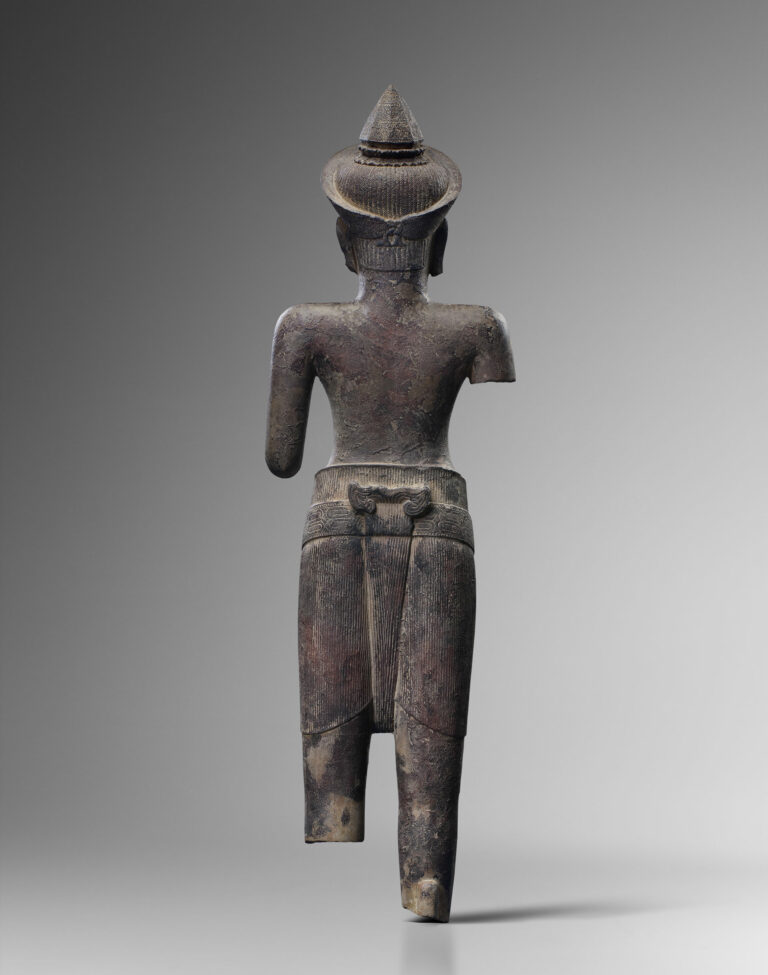A MALE DEITY
- Cambodia
- Khmer culture, Angkor period
- Angkor Wat (1081 - 1180)
- 12th Century
- Polished hard sandstone with traces of red lacquer.
- H.104 cm
The artefact in question is a polished hard sandstone piece that shows traces of red lacquer. The practice of lacquering and subsequently gilding stone sculptures was a tradition among the Khmers, starting from their ancient ancestors, the Pre-Angkorians or Pre-Khmers. An iconic example of this is the Harihara figure (from Phnom Da, 7th century) displayed at the Guimet Museum in Paris. The red lacquer applied underneath the gilding played a significant role in enhancing the brilliance of the gilded surface. It is widely recognized that the red hue of the lacquer adds vibrancy to the shimmering effect of the gilding. Regardless of how exquisite, hard, or beautiful the original stone was, the process of gilt lacquering completely covered the stone with a plastic-like layer, which also diminished the sharpness of intricate carvings, such as the details of the ‘sampot’ dress. This observation may seem peculiar, but it signifies the immense importance that these sculptures held during their time. The lacquer served as a protective coating, preserving the original polished surface of the stone, thus allowing us in the 21st century to witness the sculpture’s original appearance.
- External certificates or test reports :
• The Art Loss Register, London, carried out a search on this object and declared it matchless (ref. # S00079095, 14th of October 2013).
Photo credit : Studio Asselberghs – Frédéric Dehaen


